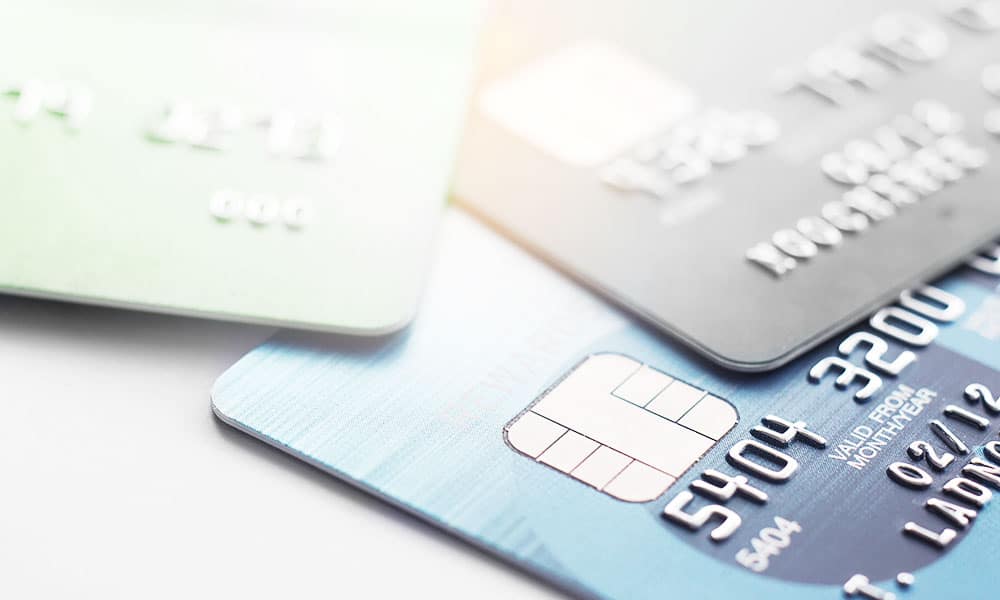Before the coronavirus pandemic, financial advisors typically recommended people prioritize debt payoff first and foremost. But now that so many Canadians have been furloughed or unemployed, the focus has shifted to savings.
It is very important to have an emergency savings account. And while experts advise you stash anywhere from three to six months’ worth of expenses in a high-yield savings account, having at least a $1,000 saved is a good place to start. But it’s hard to know what goals to prioritize if you’ve got a lot of credit card debt and not much savings. As long as you make your minimum payments on time, your credit score will stay in OK shape, and saving will help you be prepared for financial surprises ahead, such as getting laid off, losing revenue or being furloughed. However, credit cards have the highest interest rates out of every kind of credit product. If you’ve recently decided to stop prioritizing paying off your lingering credit card balances so that you can pad your nest egg instead, you may end up paying a staggering amount in interest in the long run.
One solution is to use a personal loan to consolidate your credit card debt into one monthly payment. This usually results in lower interest and can help you interrupt the debt cycle for good. Though, if you are an owner of property, there is a far better option for you.
What is Debt Consolidation?
If you have outstanding debt on more than one credit card, you can apply for a debt-consolidation loan. You use this loan to pay off your credit card debt, then repay the loan in monthly instalments, usually with a lower interest rate than you were paying on your credit cards. Typically, personal loans are fixed-rate, meaning the APR is locked in for the lifetime of the loan, and you pay the same monthly amount until it’s paid off. This is an advantage over credit cards, which have variable APRs that can go up and down.
You can get a debt consolidation loan through a traditional lender, like a bank, or from an online company such as Leap Financial. Banks tend to have more stringent standards consumers must meet to get approved for a loan, meaning you will need to have a qualifying credit score, significant borrowing history with documented on-time payments and a high enough debt-to-income ratio that proves you have the resources to afford the monthly payment. On the other hand, peer-to-peer lenders have slightly more relaxed or non-traditional requirements. For example, at Leap Financial, we only look at the equity on your property, and nothing more. No employment history, no income checks.
How Debt Consolidation Works
A debt consolidation loans is similar to a balance transfer card with a 0% APR period, but they work a little differently. To begin with, balance transfers typically charge fee between 2% and 5%, unless you opt for a no-fee balance transfer card.
Unlike a balance transfer, where you move debt from one account to another, when you get a consolidation loan, the cash is deposited directly into your bank account that you can use to pay off all of your credit card debt at once. Then, you pay back your lender with monthly payments over a timeline that is determined when you apply for the loan.
Like any loan, you’ll be charged interest. But unlike credit card interest, which averages about 16.6% according to the Fed’s most recent data from February 2020, an APR for a personal loan can be as low as 2.31% depending on the time and the equity you have in your home. Typically, your interest payments are calculated into your monthly payment and divided over the lifetime of the loan. Most loan terms range anywhere from six months to seven years. The longer the term, the lower your monthly payments will be. However, you’ll be charged more interest over time so it’s best to elect for the shortest-term loan you can afford.
Debt-consolidation loans are great if you have multiple credit card balances. Merging those balances into one personal debt consolidation loan is a helpful way to streamline your bill payments, since you’ll only have one account to keep up with.

